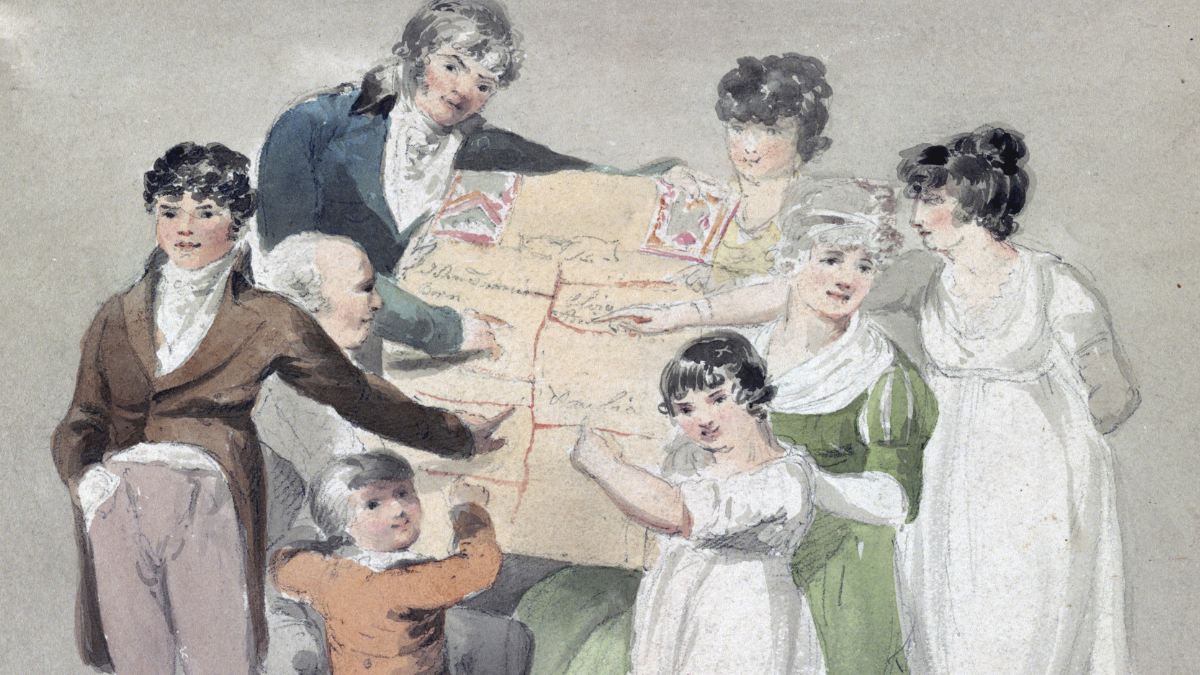The historical and political Regency period was born out of Parliament’s Regency Act of 1811, which appointed King George III’s eldest son, the Prince of Wales, as Prince Regent. This allowed him to rule instead of his incapacitated father until 1820, when “Mad King George” died and he became King George IV, ruling until his own death in 1830.
A longer Regency period is sometimes referred to as having spanned the years from 1795 to 1837, covering George III’s last 25 years, as well as the reigns of George IV and William IV, until Queen Victoria’s accession in June 1837.
WAR, REVOLUTION & POVERTY
The Napoleonic Wars enveloping the country until late 1815, and the Industrial Revolution, with its growth of the railways and factory system, brought mass unemployment. This, combined with the bad harvest of 1816, dubbed the ‘The Year Without A Summer’, and a population boom, led to widespread poverty. While the wealthy, privileged classes enjoyed all the refinements of regency culture, the working classes were desperately poor, with an average lifespan of approximately 22 years in the 1830s. Nevertheless, the Industrial Revolution brought with it medical advances that lowered infant mortality rates, while other effects of urban life also contributed to an explosion in city populations.
Much of the urban population lived in crowded slums, known as rookeries, such as St Giles in London. In these neighbourhoods gambling, prostitution, alcoholism, theft and violence became increasingly rife during the later regency era, when police were sometimes even afraid to enter without armed back up.
Political power for much of this period was held by the landed gentry, and Tories led all governments from December 1783 to November 1830. Their reactions to national crises included the Peterloo Massacre in 1819 and the harsh Corn Laws. Whigs brought in the The Great Reform Act of 1832 which gave many more people the right to vote, but explicitly excluded women. More positively, thanks to the leadership of William Wilberforce, the abolition of slavery enjoyed rising support, bringing about the Slave Trade Act 1807 and the Slavery Abolition Act of 1833.
ARTS & CULTURE
The Regency era was also a period of intense cultural flowering. Expressing the romantic movement were artists, novelists and poets including Jane Austen, Lord Byron, John Keats, William Blake, Walter Scott, Mary and Percy Bysshe Shelley, William Wordsworth, John Constable and JMW Turner. Composers such as Beethoven, Rossini, Liszt, and Mendelssohn, supplied the soundtrack. Architect John Nash designed such edifices as London’s Marble Arch and Brighton’s Royal Pavilion as well as the remodeling of Buckingham Palace. The Prince Regent, a major supporter of the arts and architecture, commissioned these and other tremendously expensive works from Nash, who was later dismissed by William IV for extreme overspending.
Meanwhile, in 1814, steam printing was first employed by The Times, allowing it to print 1,100 sheets per hour as opposed to the former rate of 200. This faster printing speed brought with it the “silver fork novels”, popular during the later Regency Era. Depicting the lives of the wealthy and titled, scandal and gossip could be spread by publishers, with identities not particularly hidden!
It was also in the Regency era, that classic horse races such as the 2,000 Guineas Stakes and the 1,000 Guineas Stakes were inaugurated and have been run annually since 1814. While National Hunt racing, informally known as “jumps”, that had begun in 18th century Ireland, also developed in England.
THE BALL
One of the most beloved activities of the aristocratic and the wealthy all through the long Georgian era, was dancing. It was considered an essential “accomplishment” for both ladies and gents, including even military gentlemen, not just for the sake of dance itself, but to have the proper elegance and poise in society. In fine families, children were taught by the dancing master as well as at school, if they attended one. In a book of 1788, on letter writing for young people, one sample letter is from a son to his father, who apparently considered his offspring too much of a weakling for dancing. The young man absolutely begs his father to allow him to partake of dance lessons so that he might no longer be ridiculed by other young gents for not knowing how “to walk well, to make a bow, how to come properly into a room, and to go out of it…”
For somewhere to show off one’s poise and training as well as, of course, to form and progress courtships and matches, or simply to mingle, the Ball had pride of place. This was most certainly true in Regency England. The privileged classes came together in public halls and private houses, or even outdoors, weather allowing, to dance the night away. Balls might be immense events planned months in advance for hundreds of invitees. In large private mansions and country houses, they were also an opportunity to show off wealth, and compete to host the most sought after ball of the season. Who was, and who wasn’t invited, was to be noted! On the other hand, spontaneous, smaller eruptions of dancing might also happen in any drawing room by just moving the furniture aside.
FOOD!
Georgians at a Regency Ball would sit down at about 11pm or even midnight after their strenuous dancing and partake of a dinner that might have included…
- White soup made with veal stock, almonds and cream.
- Cold meats – chicken or sliced ham.
- Poached salmon – glazed carrots and other vegetables in season.
- Salads.
- Desserts included fresh fruits, pound cake, known as “dry cake”, biscuits with cheese, short-bread, pies, trifles and ice cream.
- Cockscombs, bone marrow and testicles were delicacies also enjoyed at Regency era suppers!
